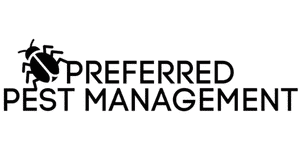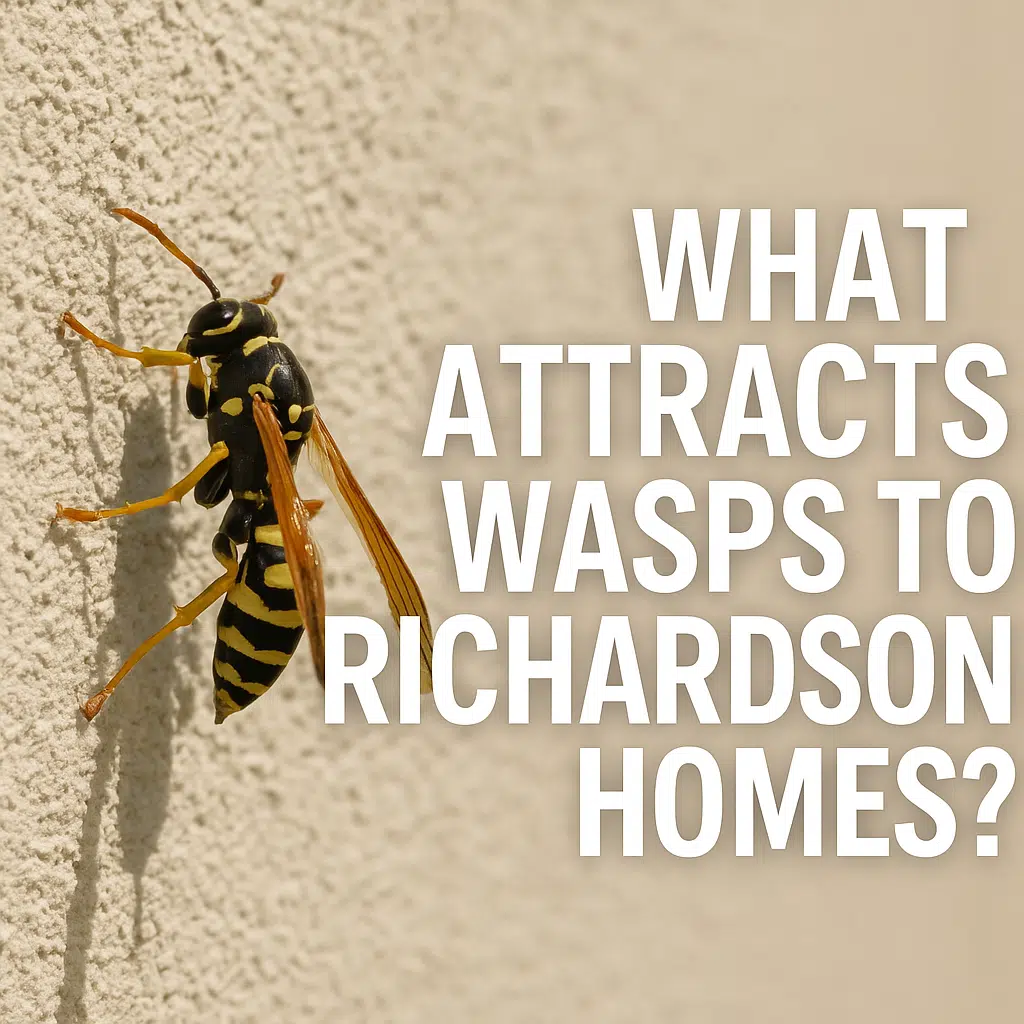Wasps are never a welcome guest, especially when they decide to build a nest on or near your home. In Richardson, TX, these stinging insects become particularly active during the warmer months, posing a threat to your family, pets, and outdoor enjoyment. Understanding what attracts wasps to your property is the first step in preventing infestations before they start.
At Preferred Pest Management, we specialize in safe, effective wasp control for homeowners in Richardson and surrounding areas. In this blog, we’ll explore the most common wasp attractants, the risks of having nests near your home, and what you can do to keep them away for good.
Why Are Wasps Attracted to Richardson Homes?
Richardson provides the perfect environment for wasps to thrive. With its warm climate, suburban landscaping, and abundance of outdoor spaces, homes here often have everything wasps need to nest and feed. Here are a few key factors that may be drawing wasps to your property:
1. Food Sources
Wasps are highly attracted to sugary substances and proteins. Your outdoor trash cans, pet food, compost piles, and even barbecues can serve as a buffet for these pests. During late summer and early fall, wasps are especially aggressive as they search for food to sustain their colonies.
2. Water Availability
Like all living creatures, wasps need water to survive. Birdbaths, pet bowls, leaky hoses, or even clogged gutters can provide a steady source of hydration for wasps looking to settle nearby.
3. Shelter and Nesting Areas
Wasps build nests in sheltered, undisturbed areas. Common nesting spots include under eaves, inside wall voids, attic spaces, sheds, and even under decks. If your home offers easy access to these types of spaces, it may be a magnet for nesting wasps.
4. Bright Colors and Floral Scents
Believe it or not, your landscaping and even your wardrobe can attract wasps. Brightly colored flowers, sweet-smelling plants, and fruity perfumes can signal a food source to foraging wasps.
Common Types of Wasps in Richardson, TX
Richardson homeowners typically encounter several types of wasps:
– Paper wasps – Known for their umbrella-shaped nests under eaves and ledges.
– Yellowjackets – Aggressive wasps often found nesting in the ground or wall voids.
– Mud daubers – Solitary wasps that build tube-like nests from mud.
Each species has different nesting habits, which is why professional identification and treatment is key.
How to Prevent Wasps from Nesting Around Your Home

Preventing wasps starts with eliminating the conditions that attract them. Here are some practical steps you can take:
1. Seal Entry Points
Inspect your home for cracks, gaps, and holes, especially around rooflines, vents, and soffits. Seal these openings to prevent wasps from nesting inside wall voids or attics. Our rodent exclusion services also help keep out a variety of pests, including wasps.
2. Keep Food and Trash Covered
Always keep outdoor garbage cans sealed tightly and store pet food indoors. Clean up after outdoor meals and avoid leaving sugary drinks or food scraps outside.
3. Reduce Standing Water
Dump out standing water from birdbaths, plant saucers, and clogged gutters regularly. Fix any leaky outdoor faucets or irrigation systems to eliminate excess moisture.
4. Trim Vegetation and Landscaping
Overgrown shrubs, trees, and hedges can provide excellent cover for wasp nests. Keep landscaping trimmed and well-maintained to make your yard less appealing for nesting.
5. Use Wasp-Repelling Plants
Some plants, such as mint, eucalyptus, and citronella, act as natural wasp deterrents. Planting these around your patio or outdoor seating area can help reduce wasp activity.
6. Schedule Professional Wasp Control
Even with the best prevention, wasps can still find a way in. That’s where we come in. At Preferred Pest Management, we offer safe, reliable wasp nest removal services that eliminate the threat and prevent future infestations. Whether you’re dealing with a current nest or want to proactively protect your home, our licensed technicians are ready to help.
FAQs About Wasps and Nest Prevention in Richardson, TX
What time of year are wasps most active in Richardson?
Wasps are most active during the spring and summer months, with peak activity typically in late summer when they become more aggressive while searching for food.
Are wasp nests dangerous?
Yes. Wasp stings can be painful and, in some cases, life-threatening to individuals who are allergic. Nests near entryways or high-traffic areas increase the risk of accidental stings.
Can I remove a wasp nest myself?
DIY wasp nest removal is risky and not recommended. Wasps can become aggressive when threatened. It’s best to hire a professional for safe and effective nest removal.
How can I tell if a wasp nest is active?
Active nests will have visible wasps flying in and out. If you see consistent activity around a particular area, it’s likely that a nest is nearby.
Do wasps return to the same nest each year?
Active nests will have visible wasps flying in and out. If you see consistent activity around a particular area, it’s likely that a nest is nearby.
Protect Your Richardson Home from Wasps with Preferred Pest Management
Wasps can turn your backyard into a danger zone, especially when nests are built close to entryways or outdoor living areas. Don’t let these aggressive insects take over your property. Preferred Pest Management offers expert wasp control services in Richardson designed to eliminate nests and prevent future infestations.
If you’ve noticed increased wasp activity or suspect a nest near your home, contact us today to schedule an inspection. We’ll help you reclaim your yard and enjoy a sting-free summer in Richardson, TX.


